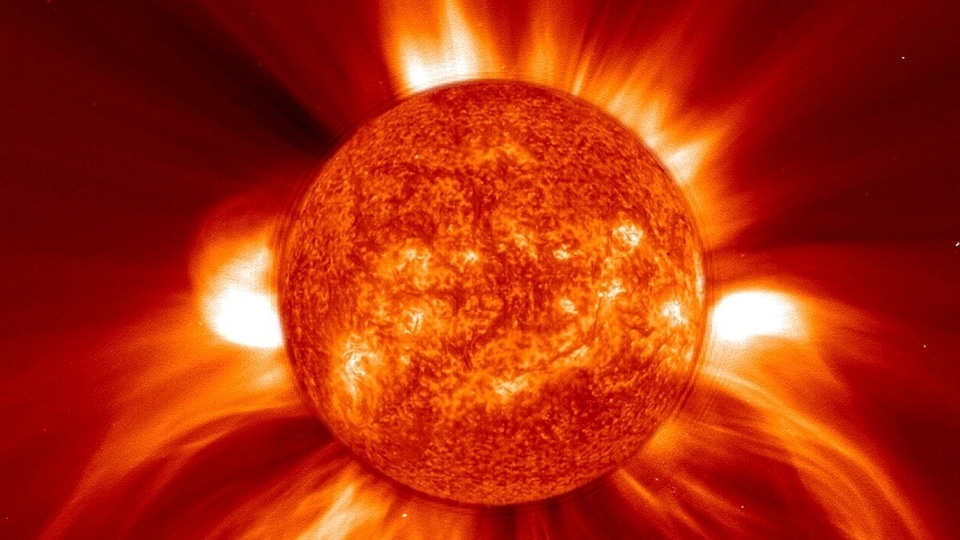Unstable sunspot explodes! Solar storm sparks BLACKOUTS over America, NASA reveals
The sunspot AR3234 exploded in the late hours of February 28, producing a powerful solar flare eruption, as per NASA Solar Dynamics Observatory. The solar storm event caused radio blackouts over both the American continents.






 View all Images
View all ImagesThe Earth is being constantly bombarded by solar storms this week. On February 26 and 27, two consecutive coronal mass ejection (CME) clouds struck the Earth, with the latter being recorded as a highly intense G3-class solar storm which caused auroras to be displayed as south as Colorado, delayed a SpaceX rocket launch and caused oil rigs to be stopped in Canada. And yesterday, the unstable sunspot AR3234 again exploded resulting in a M8.6 class solar flare eruption. It was detected by the NASA Solar Dynamics Observatory (SDO). This massive eruption sparked shortwave radio blackouts across the American continents and fears are that another set of solar storms can be triggered because of it.
The event was reported by SpaceWeather.com which noted on its website, “Sunspot AR3234 exploded today, Feb. 28th at 1750 UTC, producing an M8.6-class solar flare, percentage points below X-class. An impulsive burst of X-rays ionized the top of Earth's atmosphere, causing a shortwave radio blackout over the Americas”. The report also highlighted that CME storms are possible in the coming days.
Solar flare eruption causes radio blackouts
The geoeffective region for this ‘almost X-class' solar flare eruption was the entirety of South America, Mexico and large parts of USA and Canada. Both the American continents came under the effect of the radiation coming from the solar explosion. The radio blackout affected independent planes and drones, small ships as well as amateur radio controllers, who all struggled to broadcast and receive communications.
This is also one of the strongest solar flare explosions seen in recent times, which highlights the increasing intensity of the Sun as it reaches close to its peak. However, the danger is not over yet.
Such eruptions also release a number of coronal mass ejections into space, and these can reach the Earth within a day or so and cause yet another solar storm. Considering how powerful the eruption was, the resultant solar storm can be extremely powerful. A powerful solar storm can potentially damage satellites, break down mobile networks and internet services, cause power grid failures and corrupt sensitive ground-based electronics such as pacemakers and ventilators. However, whether this solar storm can turn so dangerous is something we have to wait and watch.
NASA Solar Dynamics Observatory
The NASA Solar Dynamics Observatory (SDO) carries a full suite of instruments to observe the Sun and has been doing so since 2010. It uses three very crucial instruments to collect data from various solar activities. They include Helioseismic and Magnetic Imager (HMI) which takes high-resolution measurements of the longitudinal and vector magnetic field over the entire visible solar disk, Extreme Ultraviolet Variability Experiment (EVE) which measures the Sun's extreme ultraviolet irradiance and Atmospheric Imaging Assembly (AIA) which provides continuous full-disk observations of the solar chromosphere and corona in seven extreme ultraviolet (EUV) channels.
Catch all the Latest Tech News, Mobile News, Laptop News, Gaming news, Wearables News , How To News, also keep up with us on Whatsapp channel,Twitter, Facebook, Google News, and Instagram. For our latest videos, subscribe to our YouTube channel.
































